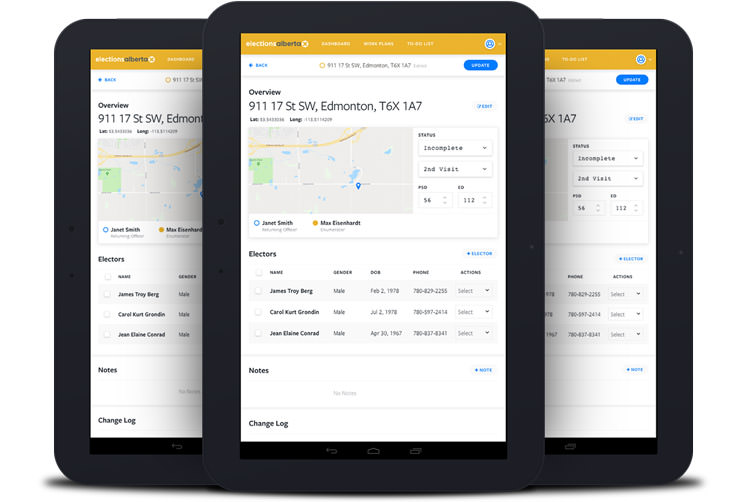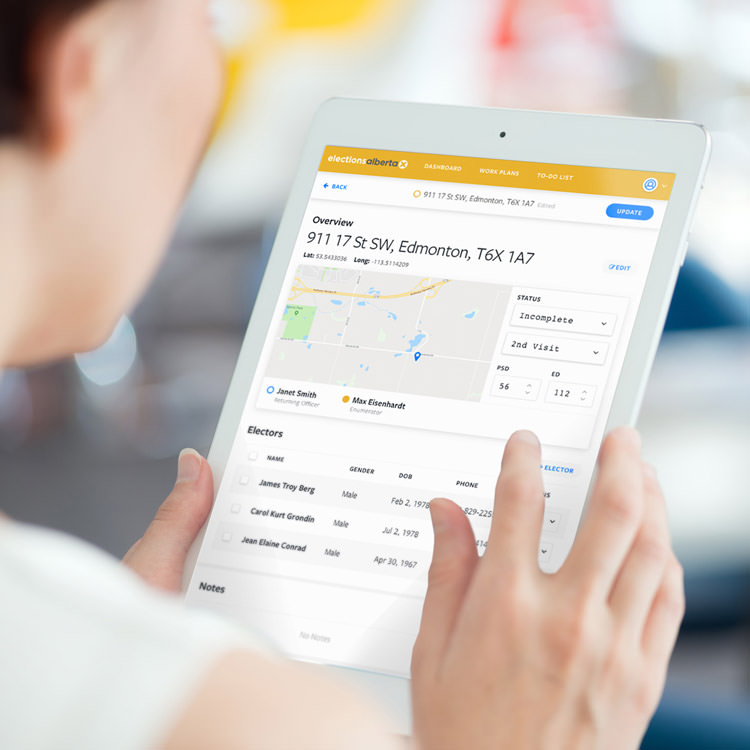Wondering what your options are for funding your app idea? What about monetizing it? From various funding models to the most common monetization strategies, the Guide to Funding & Monetizing Your App has the answers you're looking for.
I’m excited. Not just because I finally bought a fat bike to ride trails with my dog all winter, but more so to announce that we won an award in the Software category from Digital Alberta, at the 2018 Ember Awards, for the voter registration application we delivered for Elections Alberta. The project was a hugely complex and monolithic undertaking – a multi-device opus that resulted in 1.5M voting addresses updated over a 2.5 month span, with a window for the entire build of around 5 months.
It really marked a moment in time for me, and the company. Paper Leaf started as a two-person graphic design shop back in 2009, but we’ve slowly and surely shifted our focus and expertise to the digital side of the spectrum. While we’ve previously won multiple awards for website design and development in the past (along with innovation awards for weird stuff like tweeting robots), and have been named the number 12 agency in Canada by Clutch for our design work, winning an award of this nature – in the Software category – helps cement a position we’ve been moving towards for some time now. That position? Paper Leaf, as a UX-focused digital product agency capable of delivering not just websites, but award-winning, enterprise-level, mission-critical software for businesses and organizations alike. It feels good.

The Project
We’ll whip up a proper case study for our portfolio when we have a moment, but for now, here’s the Cole’s Notes on the project.
A provincial election is coming up in Alberta, and Elections Alberta was tasked with updating all the voter records (the technical term is enumeration, and the key element is updating residential addresses with registered voters). In the past, that meant manual canvassing and manual data entry, which was exceptionally time-consuming and error-prone. Thus, they came to us looking to develop an application that would digitize the entire process. The application needed to support three key scenarios:
- Self-enumeration: the ability for any eligible Alberta resident to log-in, validate their credentials, check their voter record for accuracy, and update if required.
- Phone enumeration: the ability for call centres to use the application to update the records of voters who chose to call in, and
- Door-to-door enumeration: the ability for 7,000 door-to-door enumerators to use a mobile application to go door-to-door and update voter information at each residence.
This meant we had to design and build a platform that handled all that data, securely and in a performant manner – 2.1M addresses, to be precise. The system also had to support a wide variety of edge cases, and specific requirements like:
- offline data storage, for door-to-door enumerators who lost signal, wherein the application would save data in-browser and automatically upload the data to the server when a connection was detected
- work planning functionality, wherein door-to-door enumerators logged in and created to-do-lists so their managers knew where they were planning to be when out in the field
- support for multiple statuses, wherein door-to-door enumerators reported (within the app) on items like: how many visits they’ve made to an address, whether or not the address had been successfully enumerated, etc.

The above is just a sliver of what was required of the app – it was a big project, to say the least.
In the end, the project wasn’t without its hiccups (like virtually any project). That said, it was a success made possible by a product team completely invested in the outcome as well as a client that was entirely motivated, reasonable, and great to work with. The proof lies not only in the recognition we received by winning this Ember Award, but by the 1.5M addresses enumerated and the fact that we helped pave the way for a smoother voting process.
